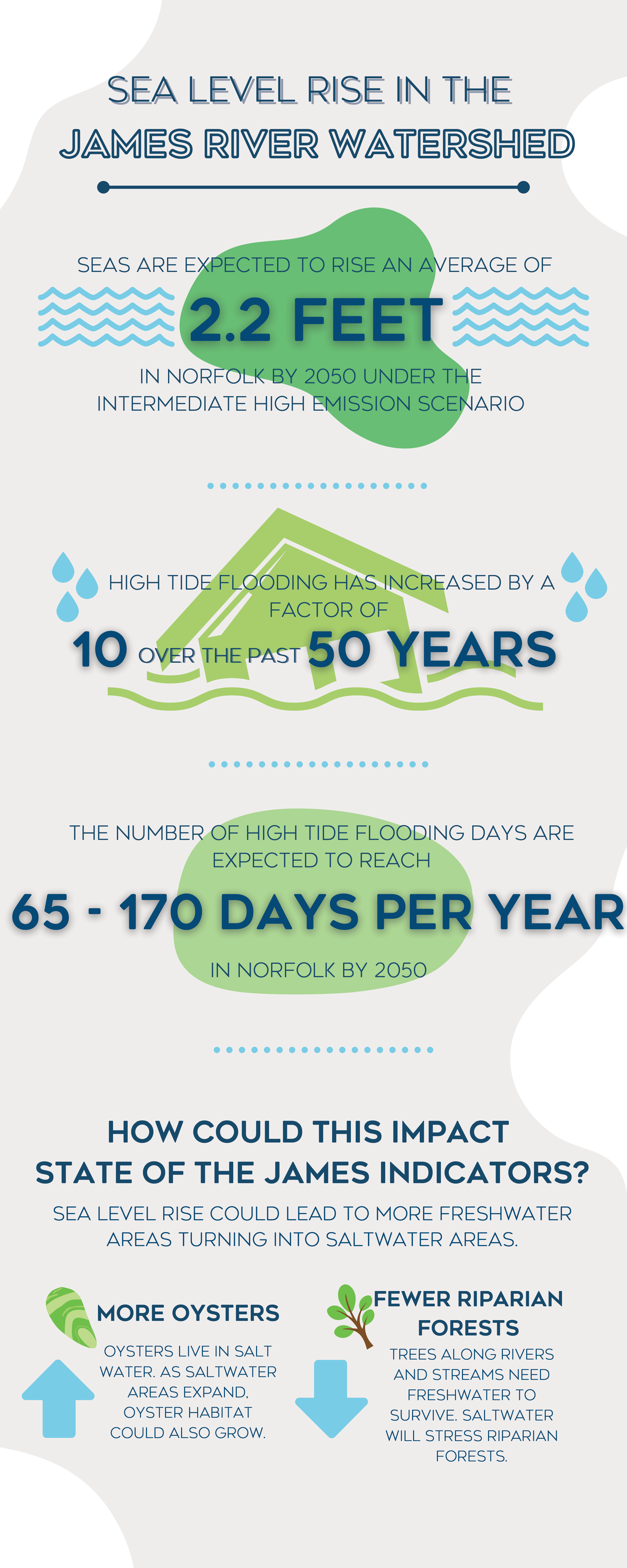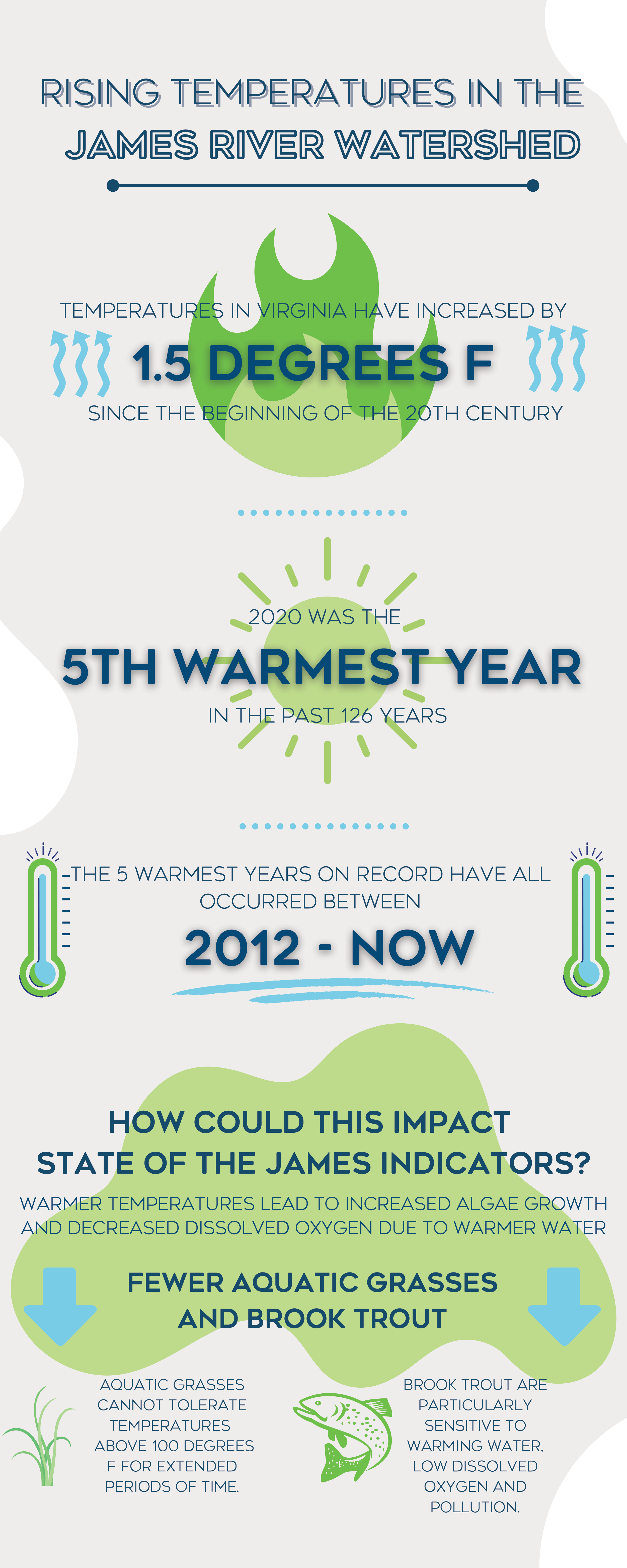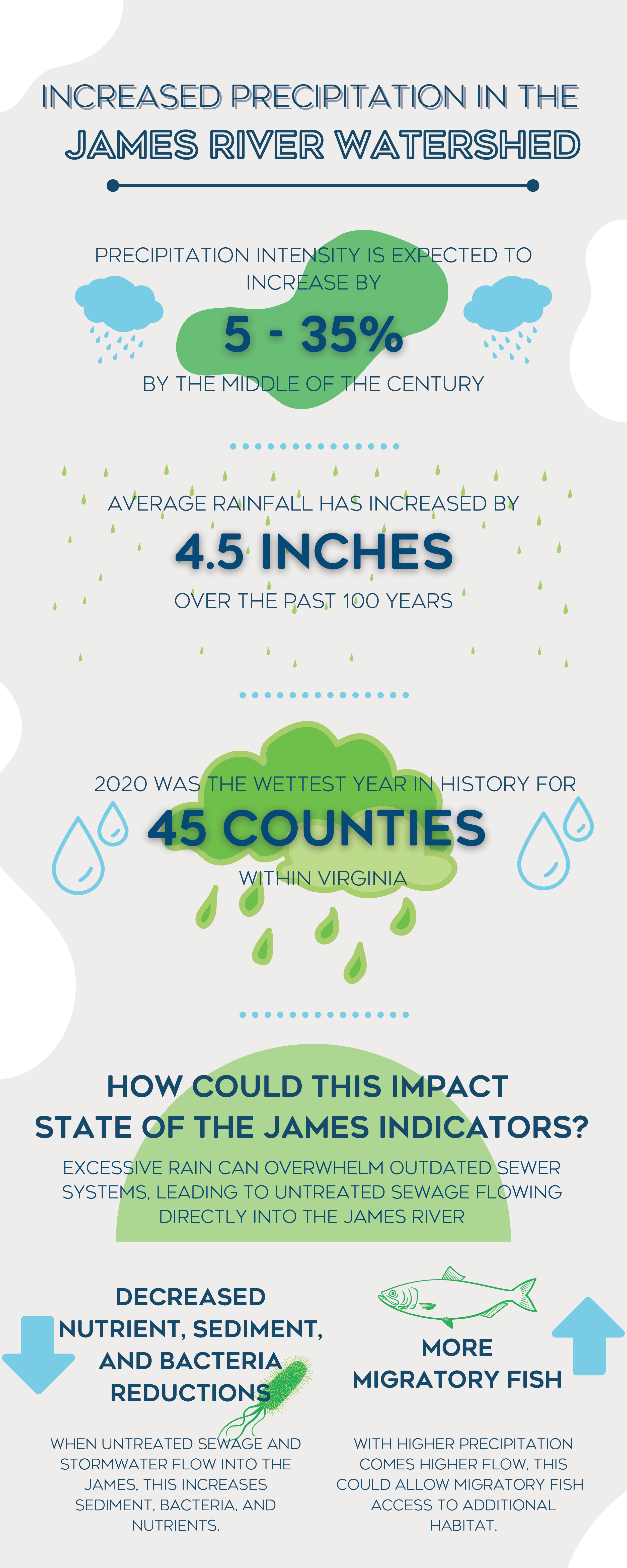State of the James
The State of the James is a report card summarizing ongoing efforts to bring the James River back to full health. This comprehensive assessment of the health of the river is published every two years.
The State of the James report is designed to examine the status and trends of indicators in two categories – River Health and River Restoration Progress – that are interconnected and build on each other to achieve a healthy James River. The River Health score is comprised of ten indicators, identified in blue, related to the ecological health of the James. They include fish and wildlife species native to the river as well as the habitat features that help these species thrive. The eight River Restoration indicators, identified in green, track our progress as a watershed to complete the restoration actions outlined in Virginia’s Chesapeake Bay Cleanup Plan and reduce the amount of pollution entering the James River by 2025.
For each indicator, the James River Association has identified and compiled quantitative benchmarks set for what is needed to achieve a fully healthy river. When possible, the benchmark is a goal that has been set by the state or an authority on a specific indicator.
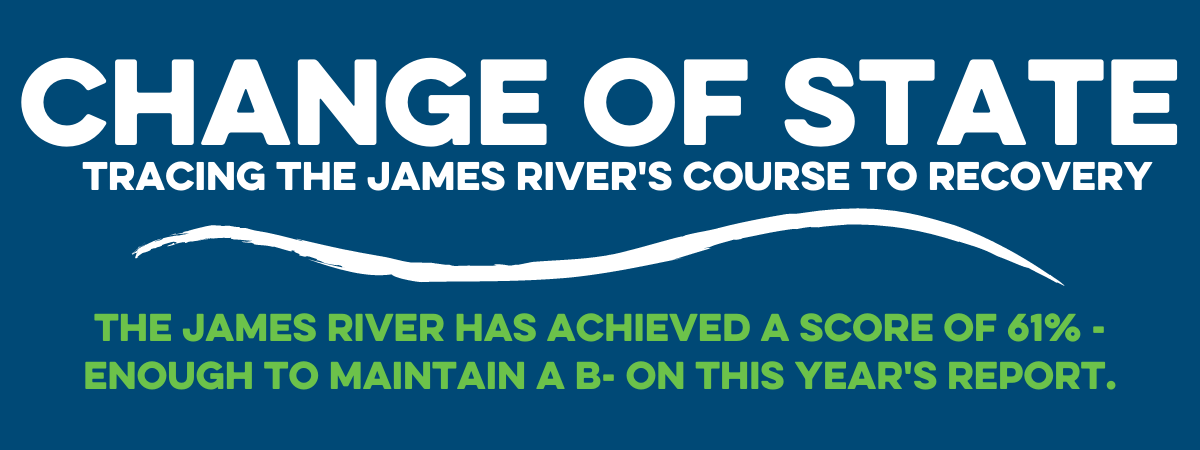
But the story doesn’t end there. The James River has undergone a remarkable transformation since the 1970s. Yet while long-standing environmental protections have helped to nurse the James back to health, our progress is tentative. View our Storymap to know more about the James River’s tenacious comeback, where we stand today, and what we can do to keep the comeback coming.

The overall score remained a B- but dropped 1 point from 2019.
The full impact of 2018’s heavier than normal downpours can now be seen through stalled progress toward phosphorus, nitrogen, and sediment pollution reductions.
Some indicators such as oysters and tidal water quality showed resilience by bouncing back from the surge of rainwater and pollution.
Looking ahead, climate change presents many challenges, including heavier and more frequent rainfall, that will increasingly impact the overall health of the James River. We must adapt to our changing climate by investing in and strengthening protection and restoration actions that promote resilience.
American Shad fell to an alarming 0%, a dangerous sign for the iconic species so integral to the history and culture of the region. Virginia must develop an emergency recovery plan for American Shad in the James River because there is no current plan for managing the threats they face.

 DRINKING WATER
DRINKING WATER
2.7 million people rely on the James River for water, making it Virginia’s largest source of drinking water.
 SEAFOOD PRODUCTION
SEAFOOD PRODUCTION
4.6 million pounds of commercial fish and shellfish were landed from the James in 2020, a total dockside value of $14.4 million.
RIVERSIDE PARK VISITATION
 Riverside parks along the James and its tributaries saw 6.2 million visitors in 2020. Richmond’s James River Park System saw the most visitation in 2020 with 2.1 million visits counted.
Riverside parks along the James and its tributaries saw 6.2 million visitors in 2020. Richmond’s James River Park System saw the most visitation in 2020 with 2.1 million visits counted.
 PUBLIC RIVER ACCESS
PUBLIC RIVER ACCESS
There are hundreds of places to enjoy the James and its tributaries. 47 public access sites have been added in the watershed since 2013.
 HUNTING & FISHING LICENSES
HUNTING & FISHING LICENSES
590,043 people registered boats and purchased hunting and fishing licenses in the watershed in 2020.
The 2020 American shad stock assessment found that coastwide populations of American shad were depleted. Learn more about the American shad and the threats that threaten its recovery.
2021 Original Webinars

Data Sources: Sea Level Rise
Data Sources: Temperature
Data Sources: Precipitation
- Chesapeake Bay Network
- NOAA, UMCES, CEC
- John Boyer, Richmond Times Dispatch
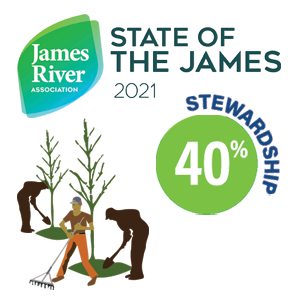
A 2017 survey measured how engaged residents across the Chesapeake Bay watershed are in individual stewardship. Residents of the James River watershed scored just above average at 40%. Imagine the state of the James when we are all doing what we can to protect our river. Learn more about how your decisions can change the James.
CHANGE THE JAMES AND THE JAMES WILL CHANGE YOU
One third of all Virginians live in the James River watershed and benefit from a healthy river. At the James River Association, we have many ways you can be a James Changer:
Prevent pollution at home by becoming a River Hero Home.
Lend us your time and talent by volunteering for the James.
Help be eyes and ears on the river by joining the RiverRats program.
Remind your elected officials that a healthy, accessible James is a priority by becoming a RiverRep.
Get out and enjoy the river on a James River Adventures trip.
Introduce someone to the river on a Connect with the James program.
Strengthen our collective voice for the river by becoming a member.
Acknowledgements
The James River Association would like to thank the following organizations for their contributions to this report: Chesapeake Conservancy, College of William and Mary – Virginia Commonwealth University Center for Conservation Biology, Eastern Brook Trout Joint Venture, Virginia Department of Conservation and Recreation, Virginia Department of Environmental Quality, Virginia Department of Wildlife Resources, Virginia Environmental Endowment, Virginia Institute of Marine Science, University of Maryland Center for Environmental Science, Integration and Application Network, United States Environmental Protection Agency Chesapeake Bay Program, and United States Geological Survey.




